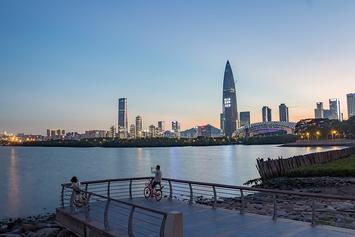
China stands as the primary exhibit of twenty-first-century urbanism. At a time when elite cities in the West barely manage to grow in population, Chinese cities have emerged out of virtually nothing, as hundreds of millions of people have moved from farm to city. The nation’s urbanization rate has exploded from 19 percent in 1979 to nearly 60 percent today; it is expected to hit 80 percent by 2050. In 1980, China, still laboring under the antiurban Maoist regime, was home to none of the world’s megacities; today, it is home to six. By 2035, ten of the world’s 50-plus megacities (urban areas with more than 10 million people) will be located in the Middle Kingdom.
According to UN projections, Shanghai, China’s largest city, will have 24 million people by 2020, quadrupling its population over 50 years. The population of Beijing, the capital, has tripled over the same period, to 20 million. Additional megacities include Guangzhou, Shenzhen, Tianjin, and Chengdu. China is also home to five of the world’s tallest buildings: the Shanghai Tower ranks second, while the Ping An Financial Center in Shenzhen ranks fourth.
What has happened in China’s cities matters not just to urbanists but to the future of civilization. China’s success has transformed it into a role model for many developing countries. Even in archrival India, most people believe that the People’s Republic will surpass the U.S. economically and dominate the world within two decades. China’s “civilization state,” rooted deeply in thousands of years of history, has extended its influence beyond its historical base in East Asia north to Siberia, but also far afield in South Asia, South America, and especially Africa, where an estimated 1 million Chinese now live. For people in much of the world, Beijing and Shanghai provide the direction and inspiration, not New York, London, or even Tokyo.
Read the entire piece on City Journal.
Joel Kotkin is the Presidential Fellow in Urban Futures at Chapman University, director of the Chapman Center for Demographics and Policy and executive director of the Center for Opportunity Urbanism in Houston, Texas. He is author of eight books and co-editor of the recently released Infinite Suburbia. He also serves as executive director of the widely read website www.newgeography.com and is a regular contributor to Real Clear Politics, the Daily Beast, City Journal and Southern California News Group.
Photo: Sparktour [CC BY-SA 4.0], via Wikimedia Commons












